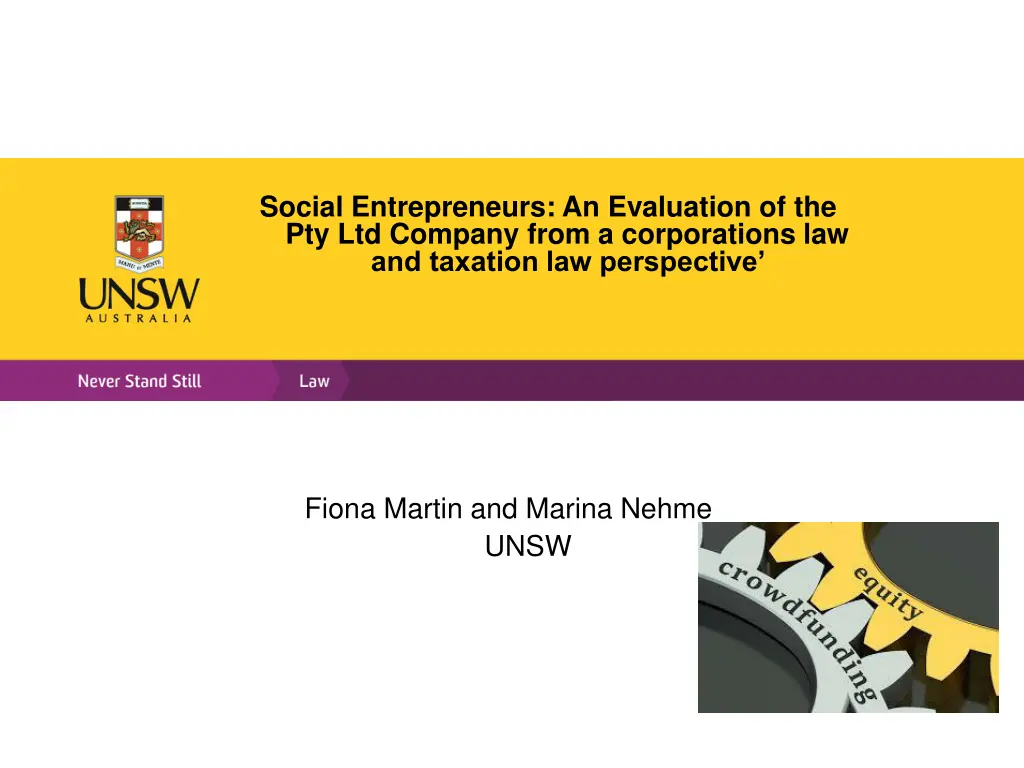
Understanding Proprietary Companies: Key Characteristics and Tax Considerations
Explore the concept of proprietary companies, their key characteristics, why they are popular, and the taxation implications from both a corporations law and taxation law perspective. Learn about the challenges faced, taxation rates, deductions, and dividend imputation in relation to proprietary companies.
Download Presentation

Please find below an Image/Link to download the presentation.
The content on the website is provided AS IS for your information and personal use only. It may not be sold, licensed, or shared on other websites without obtaining consent from the author. If you encounter any issues during the download, it is possible that the publisher has removed the file from their server.
You are allowed to download the files provided on this website for personal or commercial use, subject to the condition that they are used lawfully. All files are the property of their respective owners.
The content on the website is provided AS IS for your information and personal use only. It may not be sold, licensed, or shared on other websites without obtaining consent from the author.
E N D
Presentation Transcript
Social Entrepreneurs: An Evaluation of the Pty Ltd Company from a corporations law and taxation law perspective Fiona Martin and Marina Nehme UNSW
Proprietary Company What is it? What are its key characteristics? Why is it so popular?
Why choose such a Company? Flexibility and Control Limited Liability Reporting
Challenges Raising funds Accountability Tax?????
Taxation of Companies For income tax purposes a company is a taxpayer But unlike individuals, companies pay tax at a flat rate Currently if turnover < $2m rate = 28.5% Otherwise rate = 30% 5
Taxation of companies When you have a company there are in effect 2 taxpayers The company The shareholders There must be shareholders 6
Taxable income Tax is payable on taxable income Taxable income = Assessable income less allowable deductions: s 4-15 1997 Act Assessable income includes: Fees for sale of services Costs of good sold in course of business Government grants (if for services) Capital gains on sale of capital asset Does not include gifts Does not include GST charged on supplies 7
Deductions Business expenses s 8-1 1997 Act Eg salaries to staff, trading stock, rent of business premises Gifts to DGRs Note if company makes a tax loss it cannot distribute this to its shareholders 8
Dividend Imputation Company distributes some or all of its profits to its shareholders dividends Dividends may be assessable in the hands of the shareholders s44(1) 1936 Act All shareholders (including company shareholders) who receive a dividend are entitled to a credit for the tax paid by the company 9
Dividend Imputation System Part 3-6 1997 Act (Divisions 200 to 207) Dividends must be paid by Australian resident companies Dividends must be paid to Australian resident shareholders 10
Taxation of individuals The following rates for 2015 16 applied from 1 July 2015. Also add 2% Medicare levy and 2% budget repair levy to income over $180,000 Taxable income Tax on this income 0 $18,200 Nil $18,201 $37,000 19c for each $1 over $18,200 $3,572 plus 32.5c for each $1 over $37,000 $37,001 $80,000 $17,547 plus 37c for each $1 over $80,000 $80,001 $180,000 $54,547 plus 45c for each $1 over $180,000 $180,001 and over 11
Effect of dividend imputation on shareholder Company level Taxable income Company tax @ 30% After tax income paid as div $1,000 300 $700 Shareholder Level different tax rates Dividend Imputation credit AY Tax Offset Tax payable (excess) Ms A 49% B Pty Ltd 30% 700 300 1,000 490 (300) 190 700 300 1,000 300 (300) (Nil) 12
Conclusion Any Questions or Comments? Thank you






















